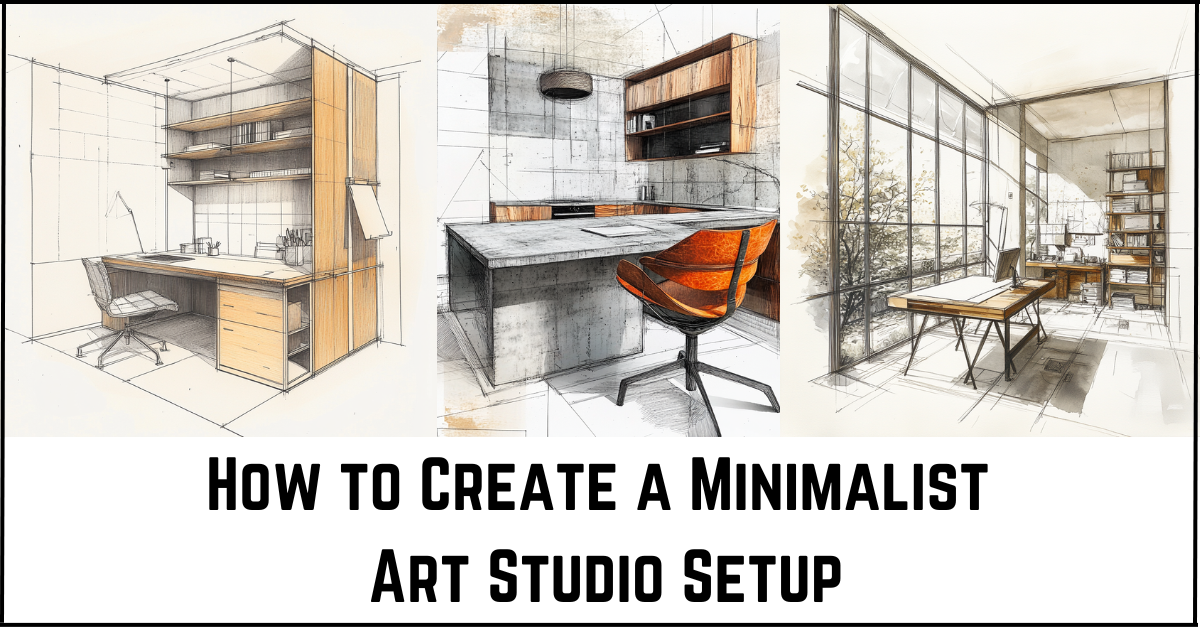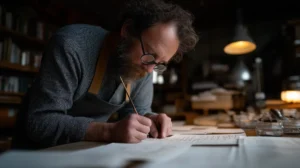A cluttered art studio creates a cluttered mind. Creativity needs space—both physically and mentally. A minimalist art studio setup strips away distractions, leaving only what is essential. The right balance of light, furniture, materials, and workflow creates a space that supports focus and artistic flow. This is not about sterility or emptiness but about intentional choices. Every object should have a function, every material a purpose.
If you want to create your own home art studio and need home art studio ideas, or you need to set up an art studio elsewhere – here’s how to design a setup that works for you, not against you.
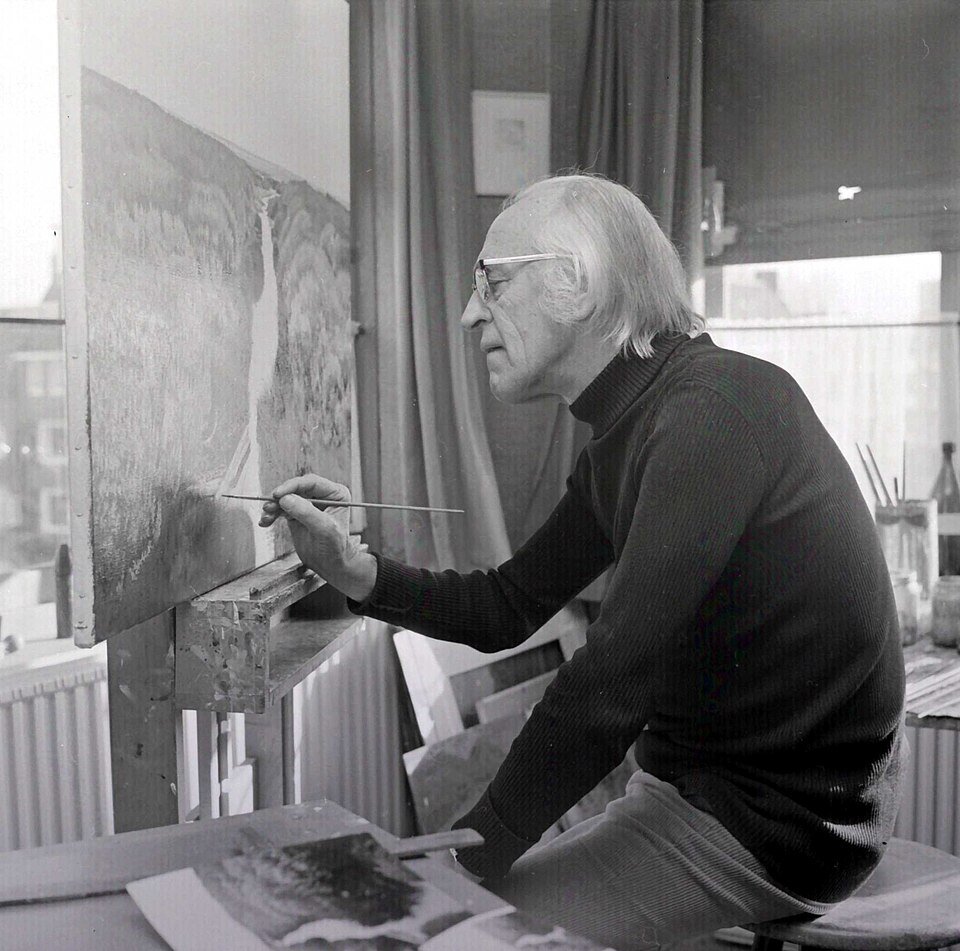
#1. Space and Light
A minimalist art studio needs space to breathe. Arrange your work area with a focus on openness. Natural light is essential—position your workspace near a window to avoid artificial glare. If natural light is limited, use neutral-toned LED lighting with adjustable brightness. Avoid cluttered walls. A clean background helps maintain focus.
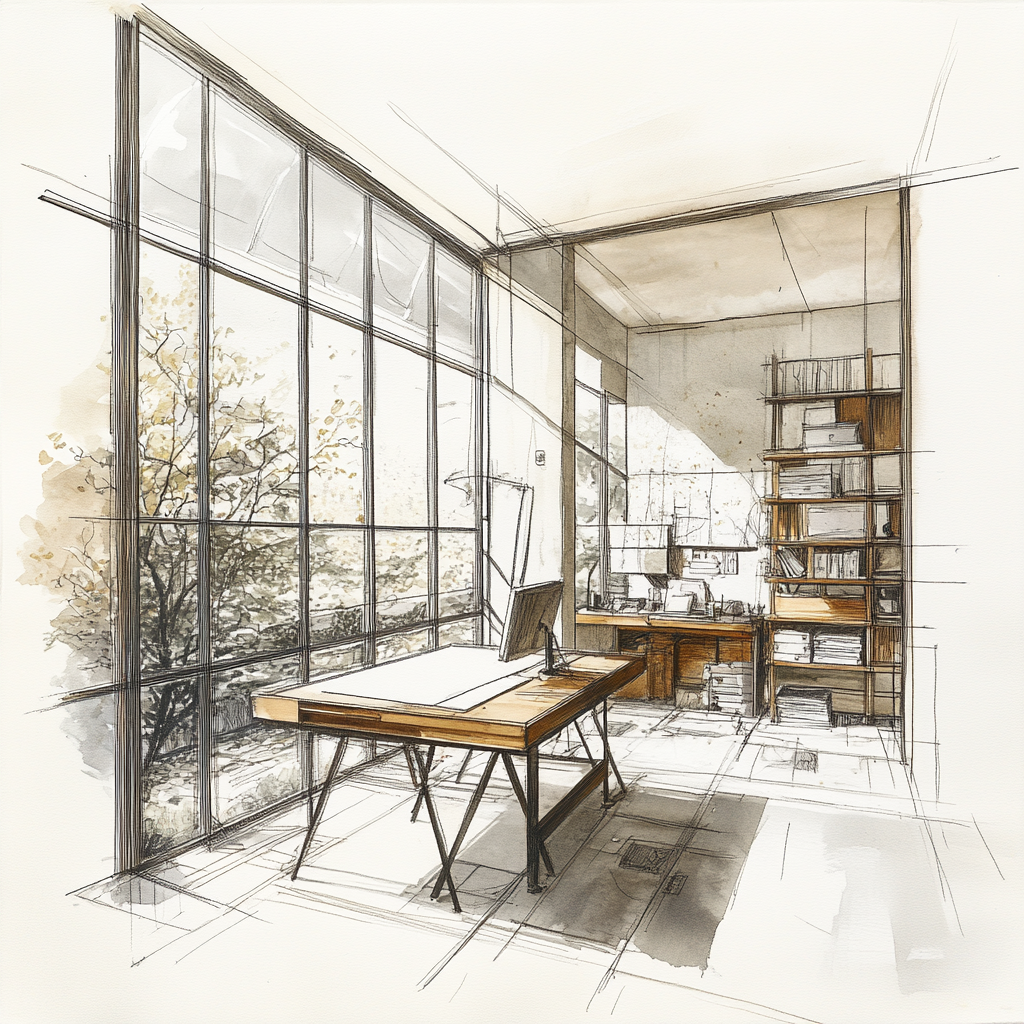
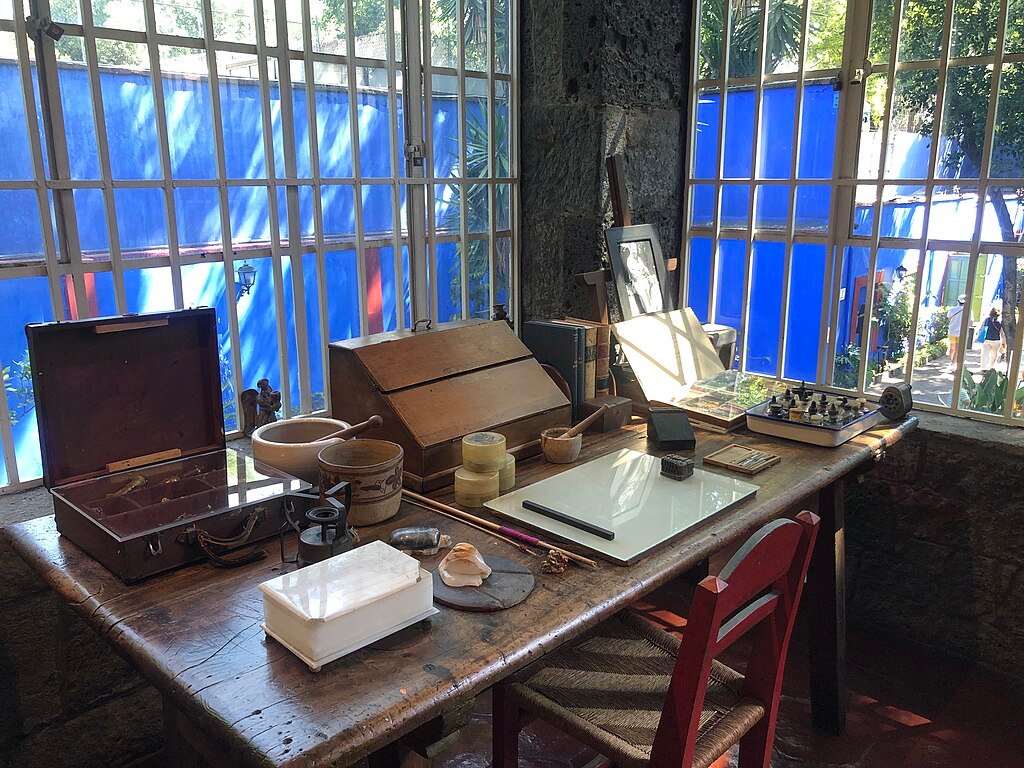
#2. Furniture and Layout
Choose furniture that serves a purpose. A sturdy, spacious table and a comfortable chair are enough.
If possible, use modular furniture that adapts to different projects. Storage should be discreet—hidden shelves, drawers under tables, or a single open shelf with frequently used materials. Avoid decorative items that do not contribute to the workflow.
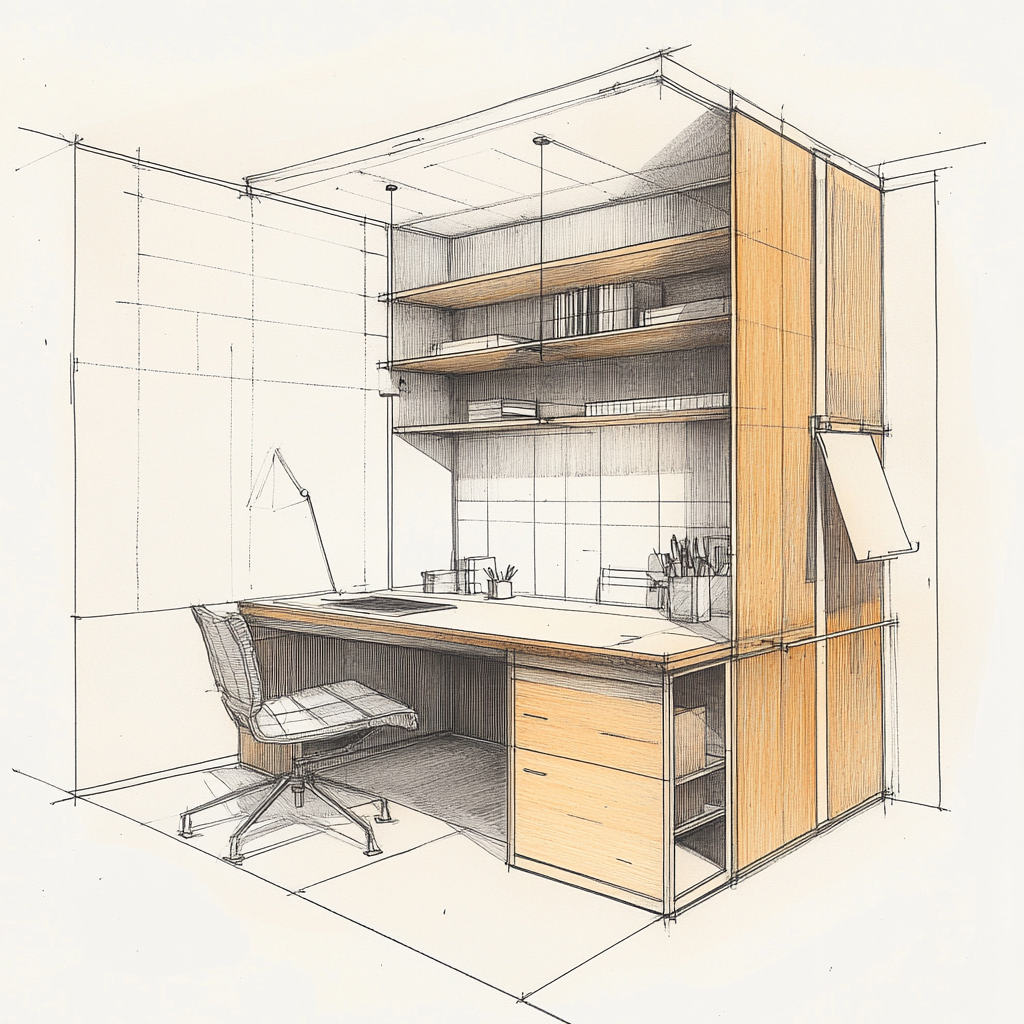
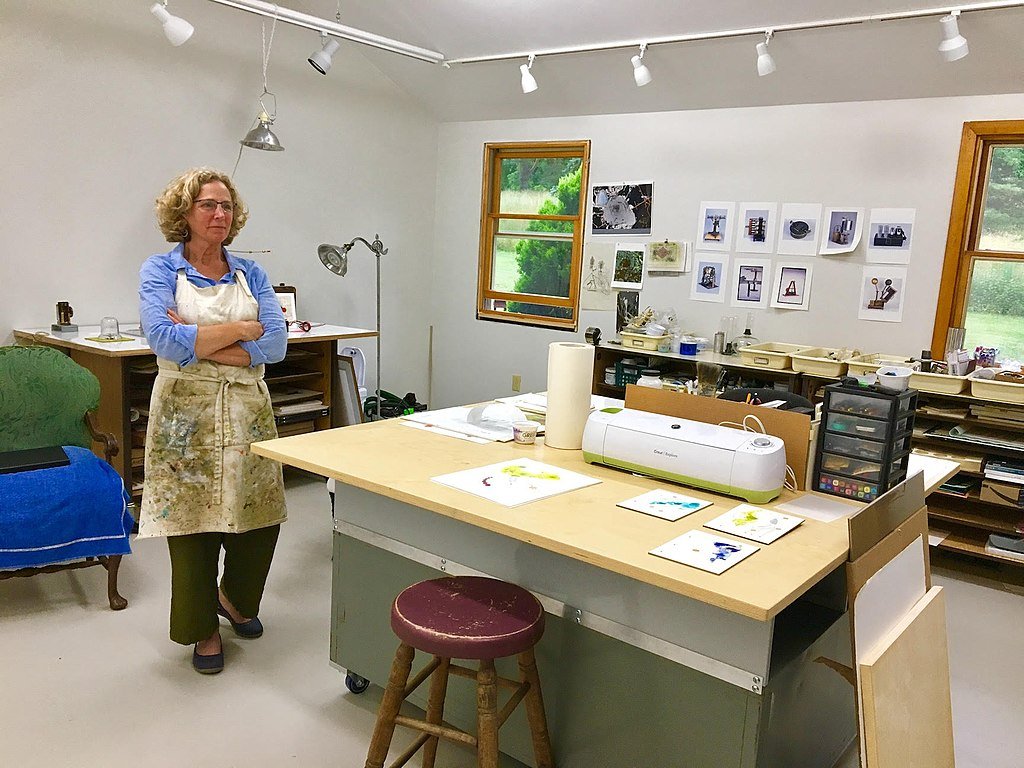
#3. Sound and Atmosphere
A quiet environment supports concentration. If external noise is an issue in your art studio, consider acoustic panels or a minimalist sound system with neutral background sounds.
Keep the space ventilated and free of unnecessary scents. If you use a diffuser, opt for subtle, natural aromas.
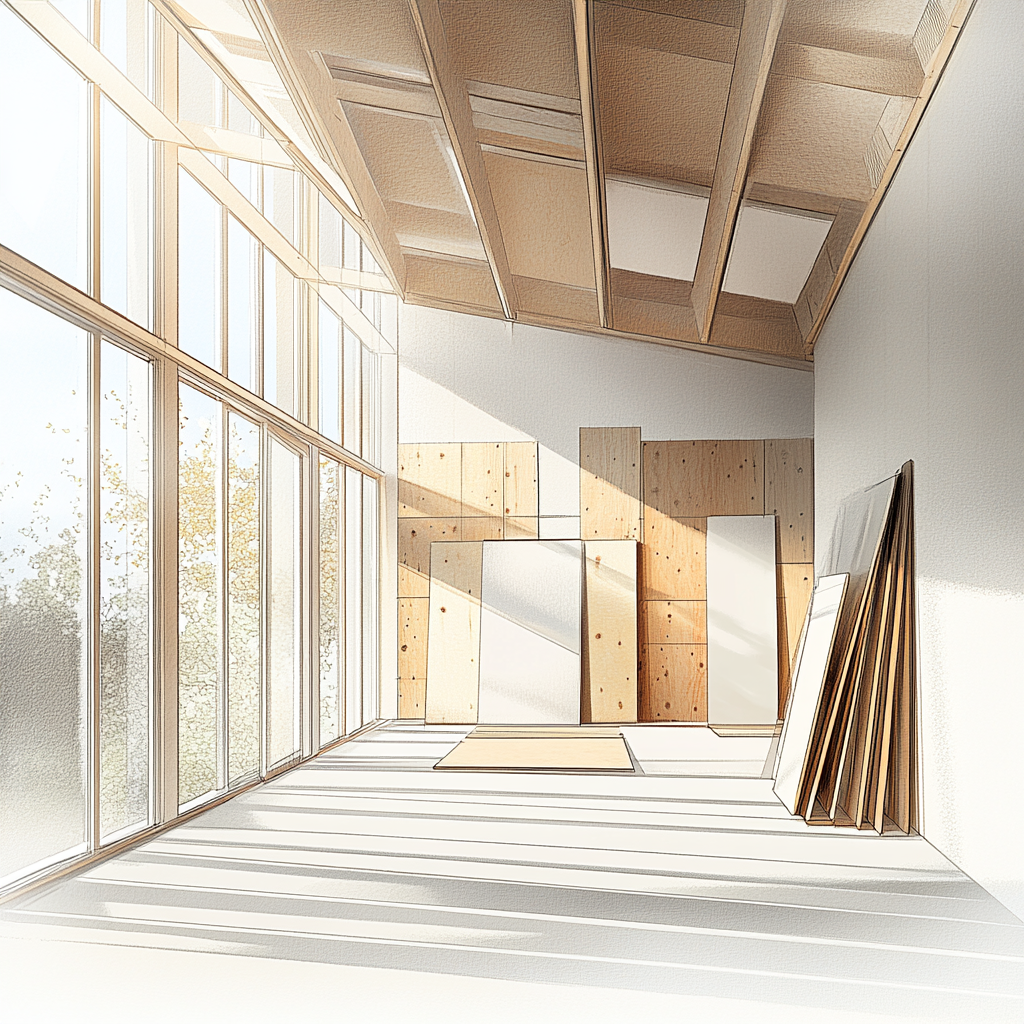
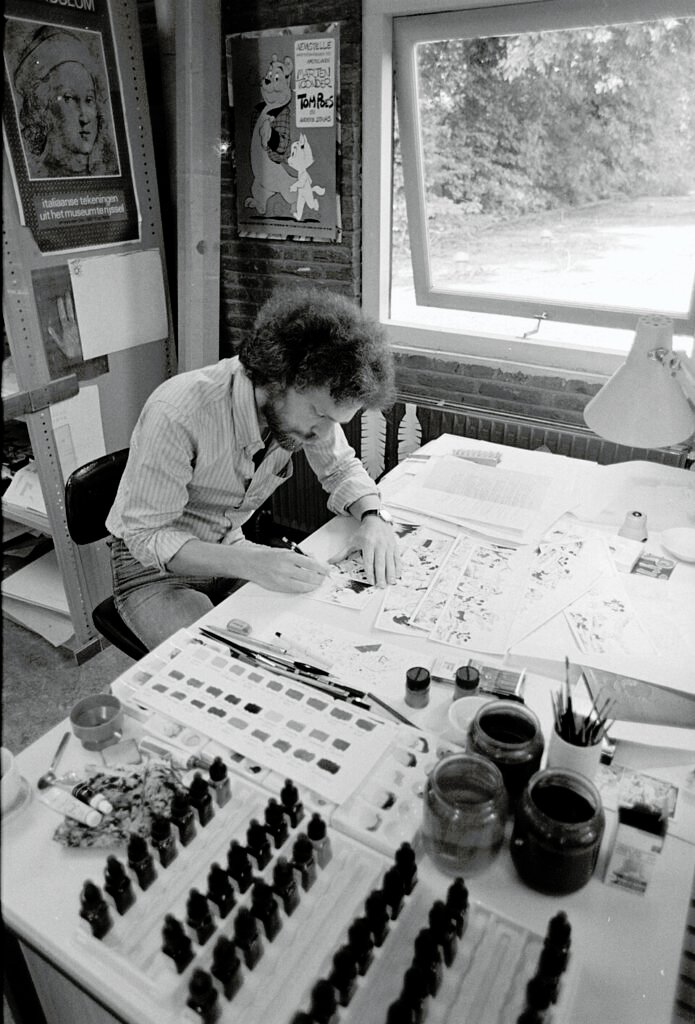
#4. Colors and Materials
Neutral colors keep the mind clear and create beautiful home art studio aesthetic. White, beige, gray, and muted earth tones work well in an art studio setup.
Natural materials such as wood, linen, and concrete add warmth without distraction. Avoid glossy or reflective surfaces that can interfere with lighting and focus.
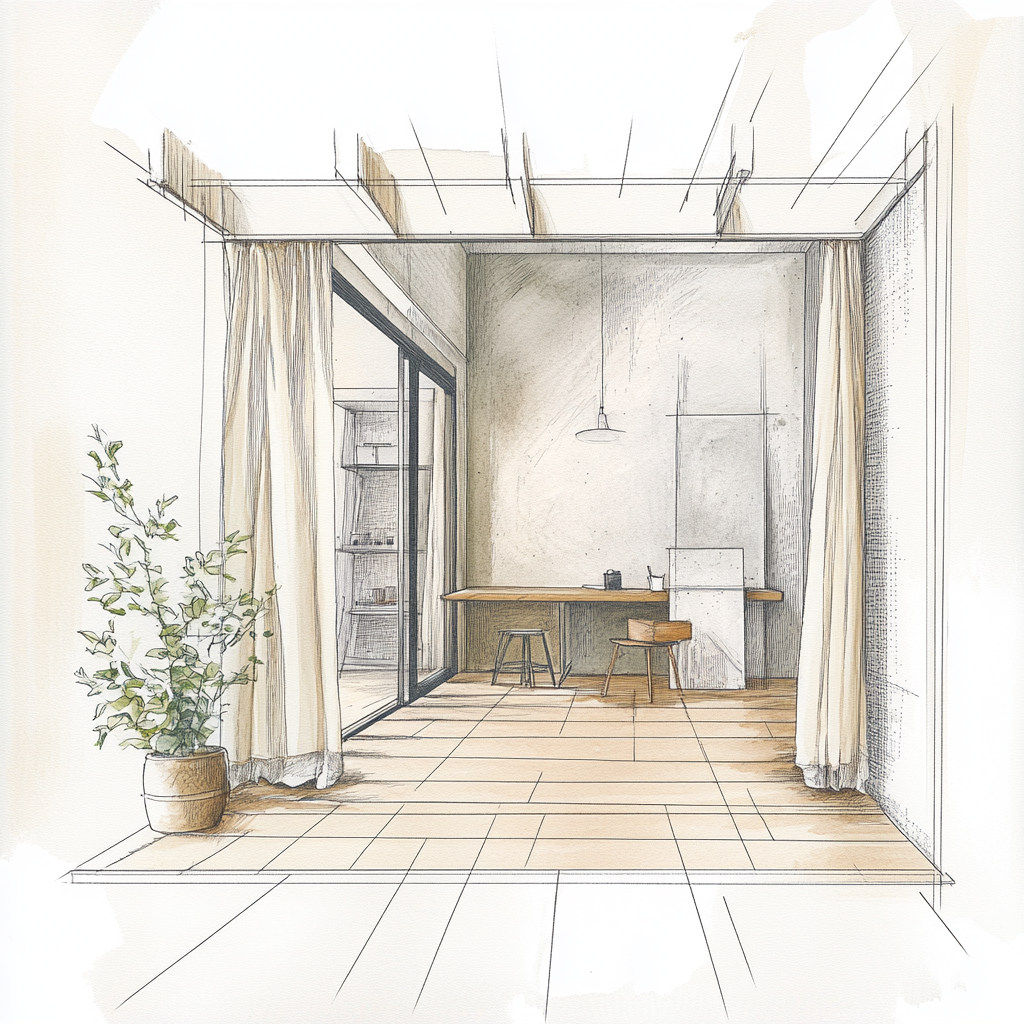
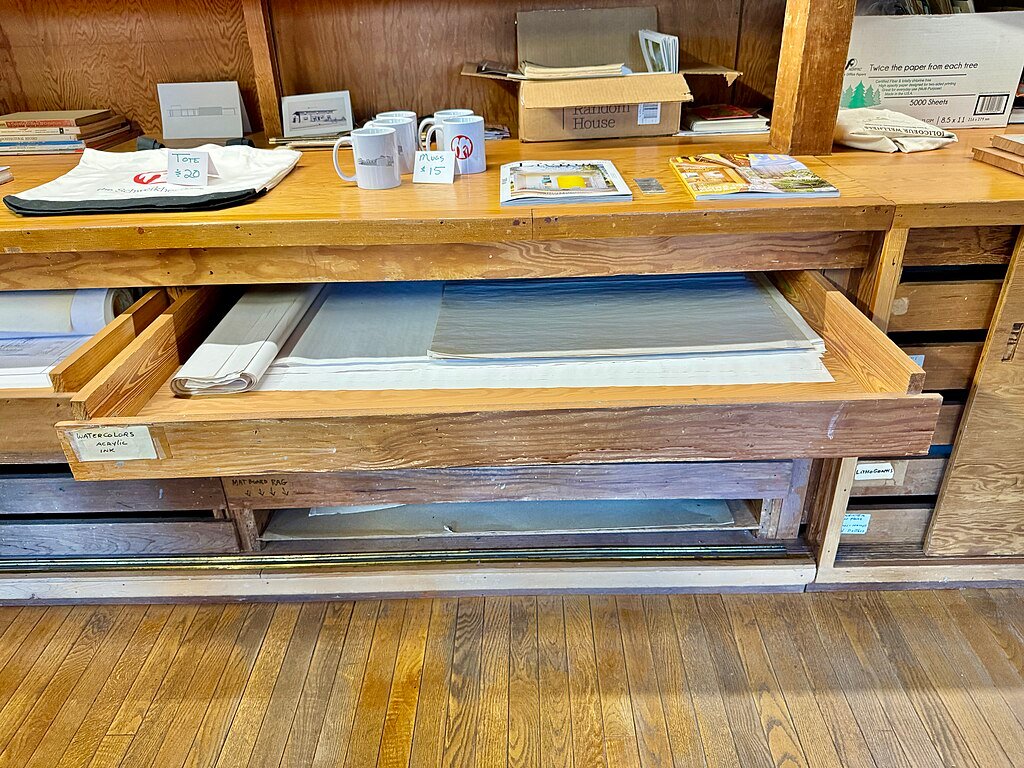
#5. Art Supplies and Storage
Keep only what you use. Store materials in an accessible but organized manner. Vertical storage maximizes space efficiency. Glass jars, wooden boxes, or metal trays help maintain order. If an item hasn’t been used in months, reconsider if it belongs in the studio.

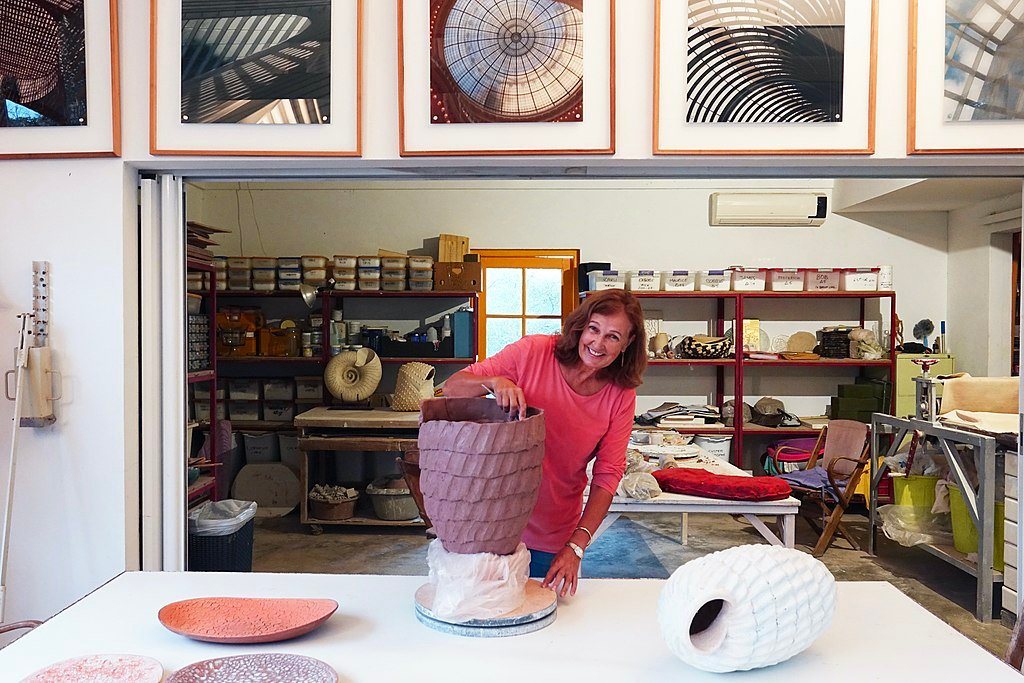
#6. Technology and Digital Workflow
A laptop or tablet can be useful but should not dominate the space. Use digital tools to archive sketches and inspiration, reducing the need for physical clutter. A wall-mounted screen can serve as a digital mood board while keeping the workspace clear.
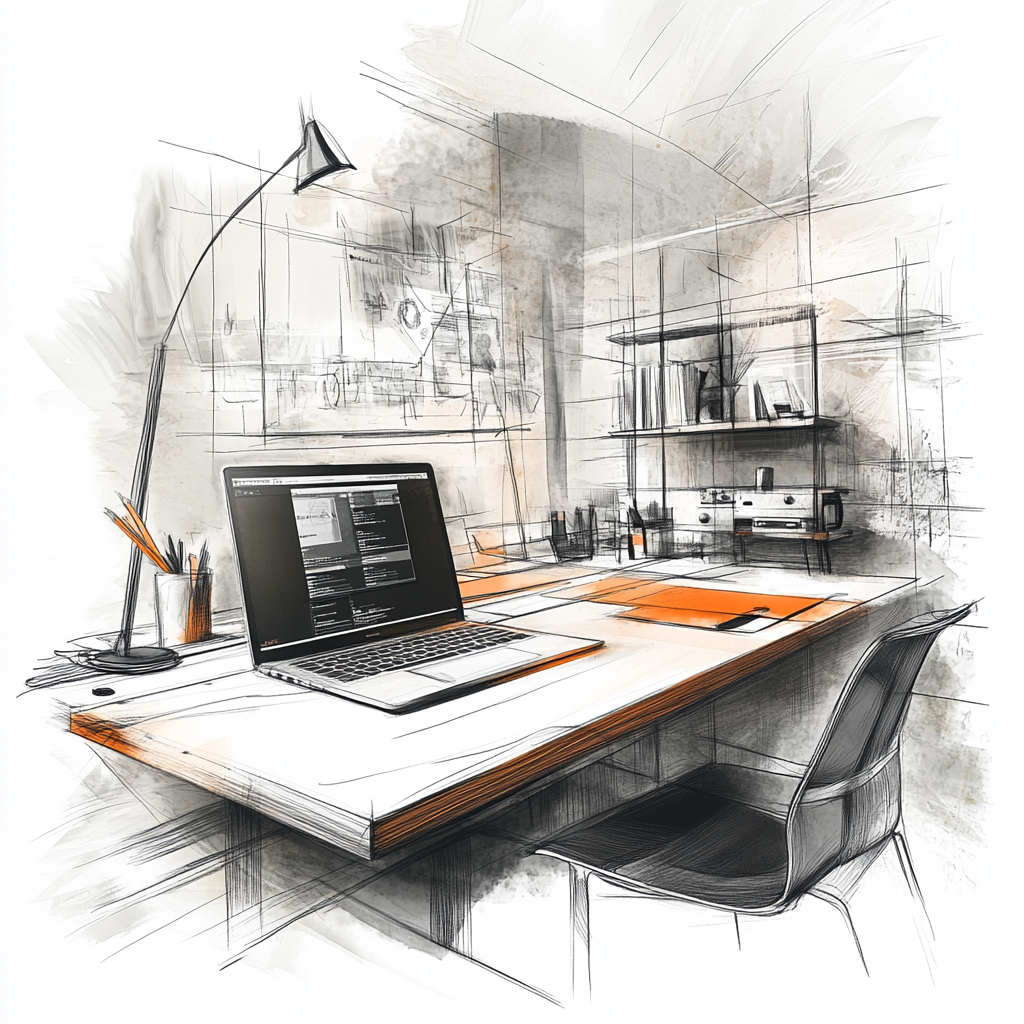
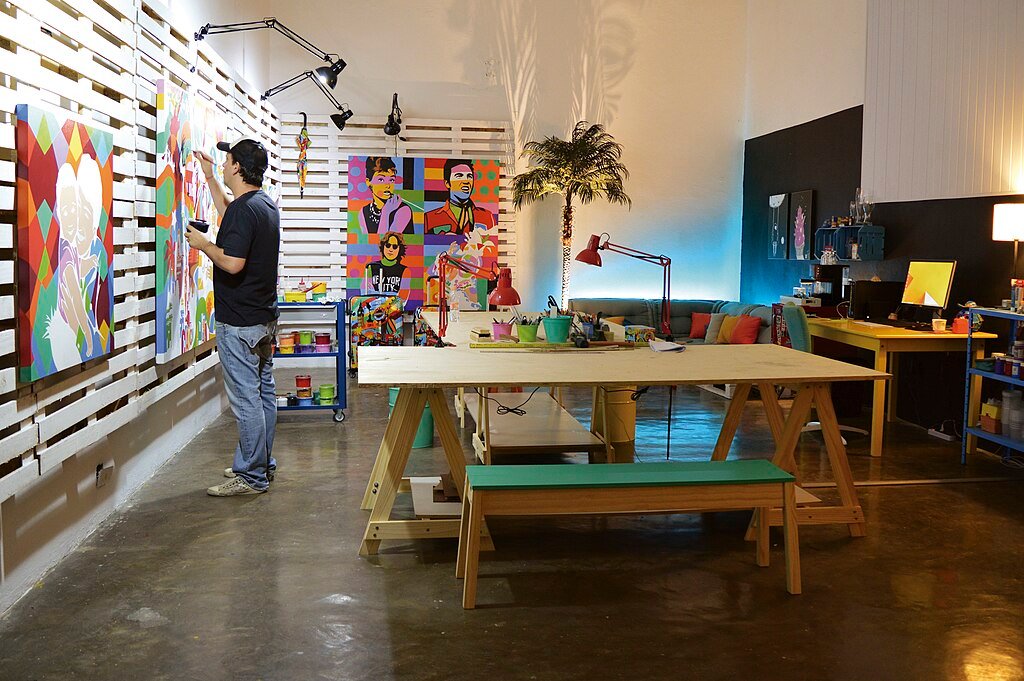
#7. Mental Clarity in the Studio
An art studio design should support both creativity and discipline. Keep a structured workflow: start with a clean space and reset it after each session. If inspiration fades, adjust the lighting, declutter, or step away for a moment. A minimalist approach to space also reflects a minimalist approach to thought.
A minimalist studio does not mean impersonal. Allow for a single focal point—one artwork in progress, a carefully chosen object, or a simple inspiration board. Keep personal items meaningful and intentional. The studio should reflect your artistic vision without overwhelming it.
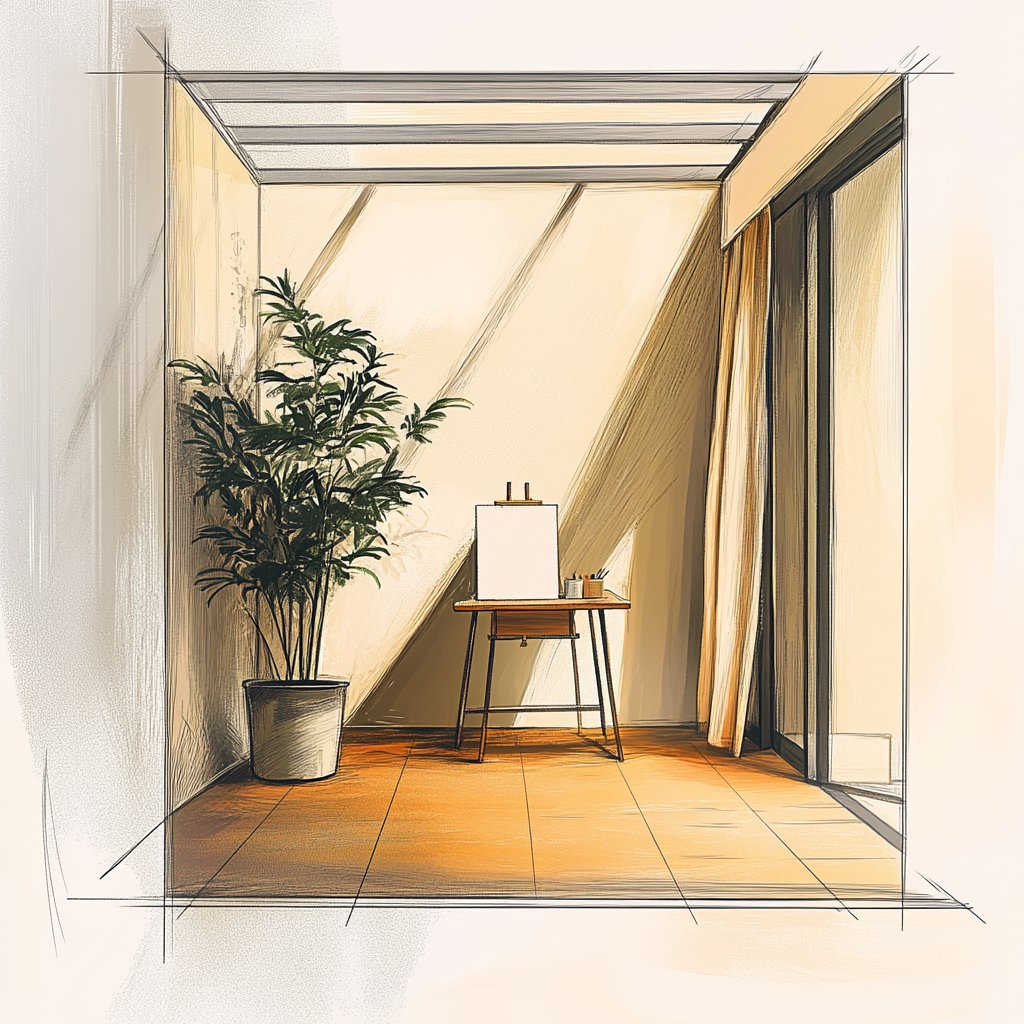
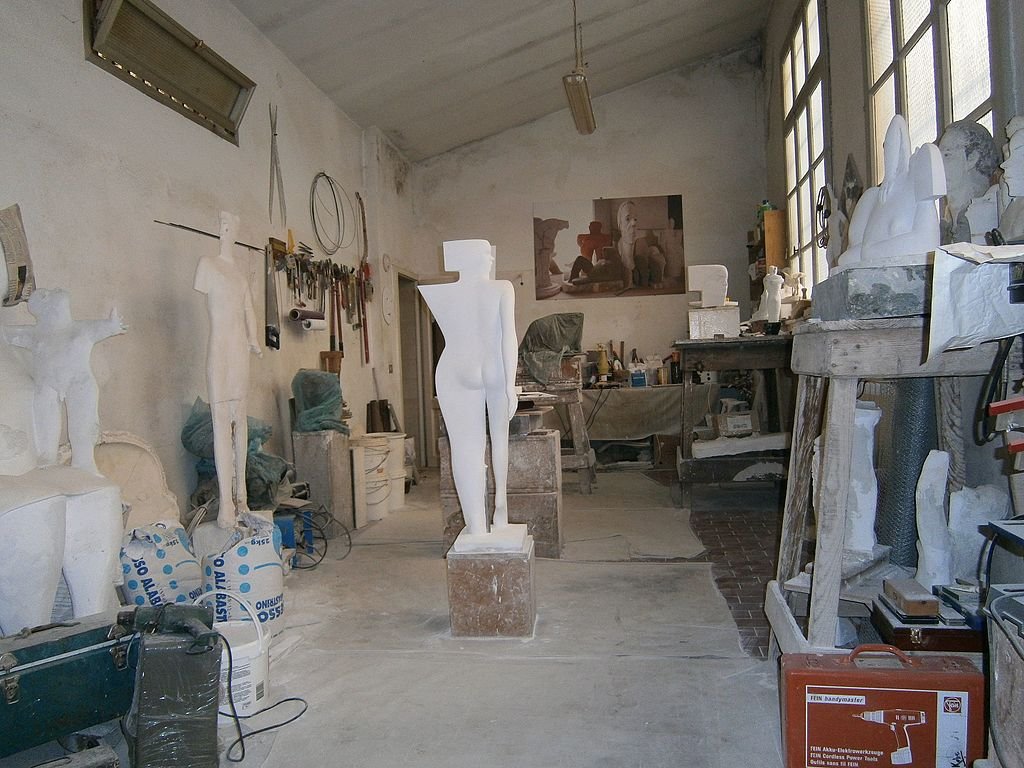
#8. Flexibility and Adaptability
A minimalist studio should not be static. The workspace should adapt to different projects. If you work on multiple mediums, use movable elements like lightweight tables or adjustable shelving. Keep open floor space for larger works. Design the studio so it evolves with your needs.
The art studio layout should follow the natural flow of work. Place essential tools within arm’s reach. Keep wet and dry work areas separate. Reduce unnecessary steps—if you find yourself constantly looking for something, it needs a designated place. A well-organized studio minimizes distractions and maximizes efficiency.
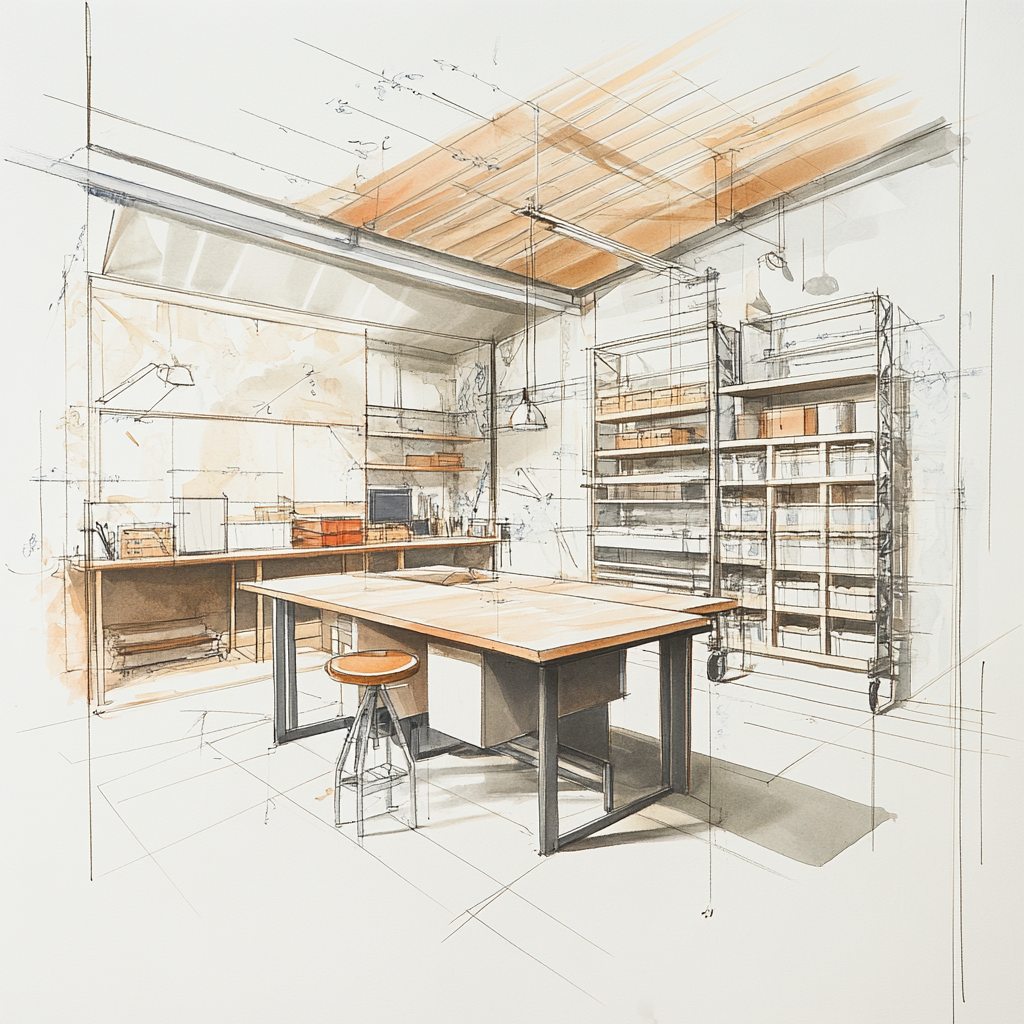
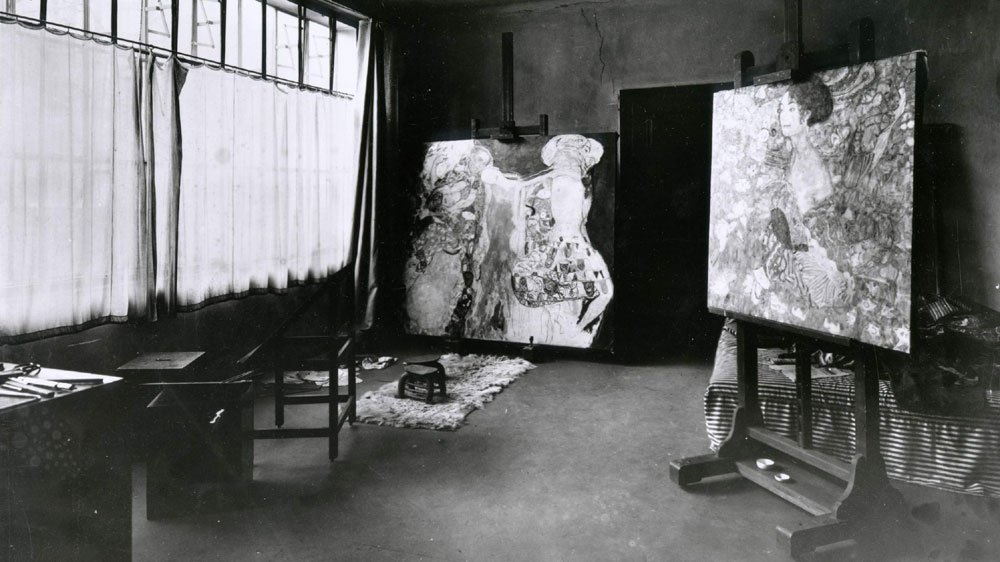
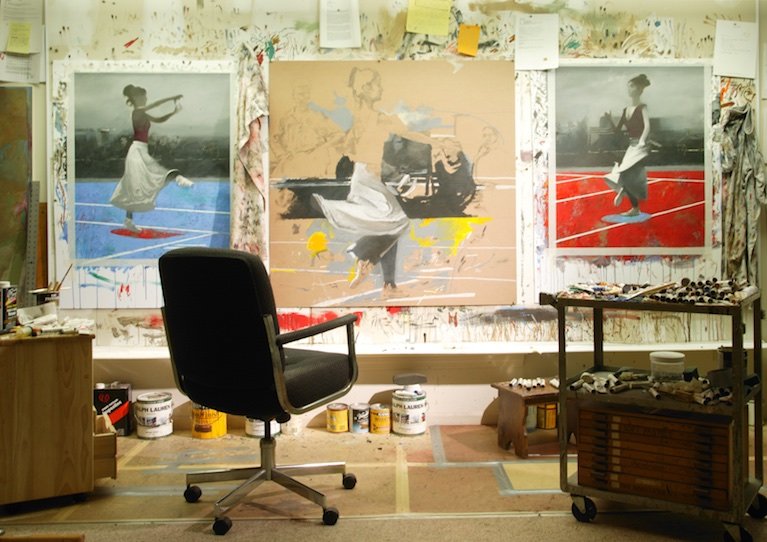
#9. Sustainability and Longevity
Minimalism is not about cheap materials. Invest in durable, high-quality tools and furniture that will last. Avoid trends and disposable items. Choose materials with a low environmental impact. A well-built, timeless studio setup reduces waste and maintains focus on the work rather than the space itself.
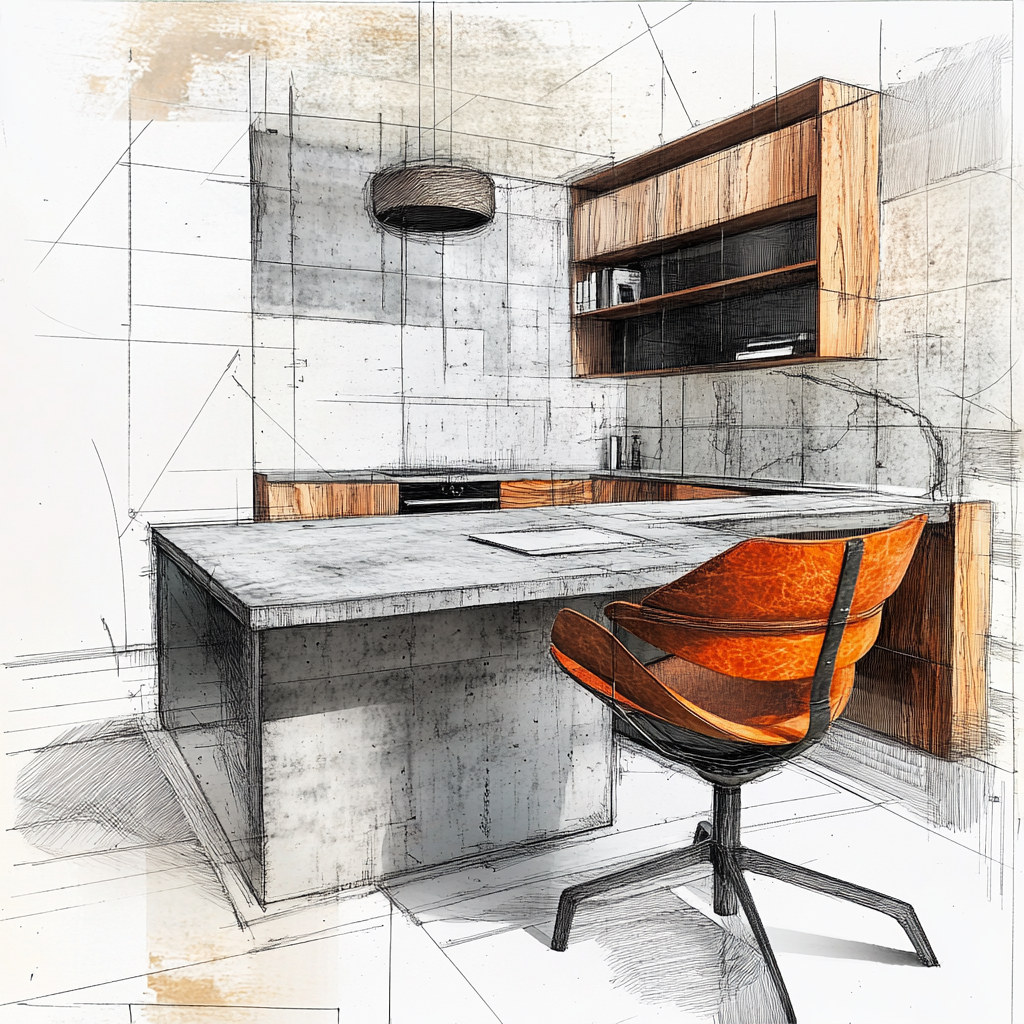
In Conclusion
A well-designed art studio is not just a space, it’s a tool. When everything has a place and a purpose, creativity flows without friction.
Keep it simple, adaptable, and focused on what truly matters. The less you have to think about your space, the more you can think about your art.
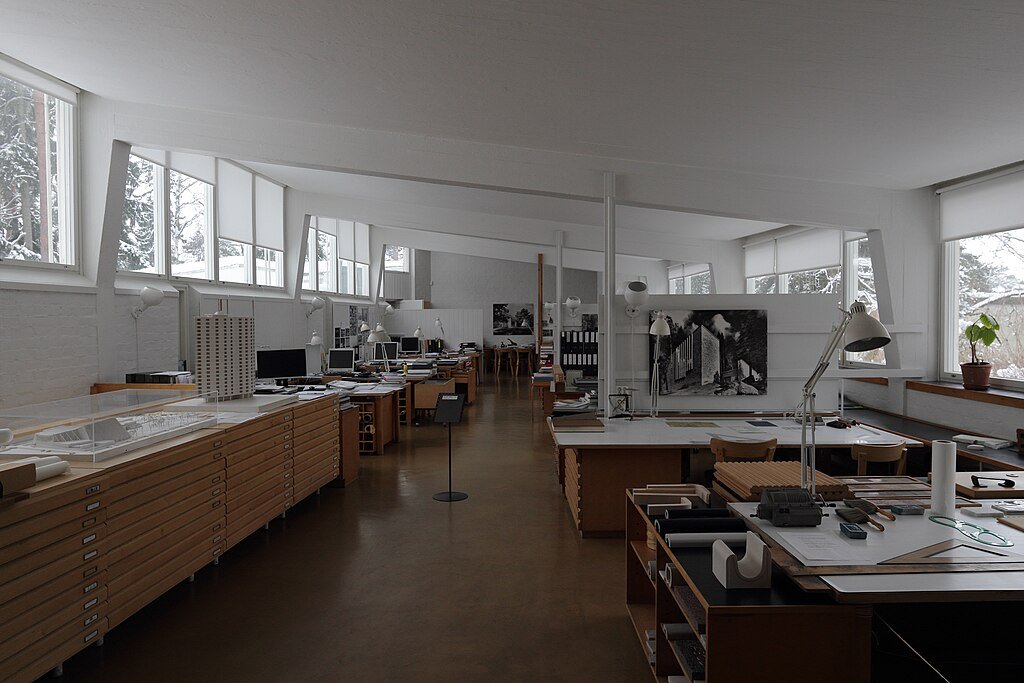
For extra inspiration and art studio ideas, have a look into Scandinavian architects’ own work studios.
Here’s another fantastic collection of 312 art studios of famous artists around the world.

